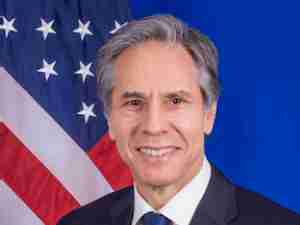- Further steps to "guard against and defuse financial risks" in 2016, and to effectively defuse local-government debt risks.
- Promote "mass entrepreneurship and innovation" and continue to implement an innovation-driven strategy.
- Reduce poverty by establishing a detailed register of the poor population and offering tailored assistance.
- Offer more support for companies to upgrade technology and equipment, and reduce debt with "innovative financial policies."
- Beef up agricultural production to ensure food security and stable income growth for farmers by modernizing infrastructure and technology to boost capability and quality.
China Signals More Stimulus After Top Meeting to Assess Economy
By: Bloomberg News | Dec 21 2015 at 07:33 AM | International Trade
China’s leaders signaled they will take further steps to support growth, including widening the fiscal deficit and stimulating the housing market, to put a floor under the economy’s slowdown.
Monetary policy must be more "flexible" and fiscal policy more “forceful” as leaders create “appropriate monetary conditions for structural reforms,” according to statements released at the end of the government’s Central Economic Work Conference by the official Xinhua News Agency on Monday. It said the fiscal deficit ratio should be raised gradually.
While the leadership also endorsed structural reforms and reining in China’s increasing reliance on credit, the macroeconomic policy statements indicated concern about letting the economy’s expansion slow too much. The government’s annual growth target is typically set at the gathering; President Xi Jinping has said the nation must meet a minimum pace of 6.5 percent.
‘Concerted Easing’
"They have a challenge to restore their own credibility, and to that end we’ll see concerted easing efforts in order to try to turn the economy around, at least in the short term," said Mark Williams, the chief China economist at Capital Economics Ltd. in London. "It’s clear that policy in a broad sense is still being eased, and it’s reasonable to expect looser fiscal policy next year and also looser monetary policy."
The growth target this year was for a rate of about 7 percent. Even meeting that, China would see its weakest expansion since 1990.
Officials also pledged assistance for rural residents seeking to buy homes in urban areas and encouraged cheaper residential prices, which would help shrink a glut of unsold properties. The government will promote “consolidation of property developers” and encourage them to change marketing strategies, Xinhua reported. Outdated restrictions on home ownership will be removed, according to the report.
Monetary policy flexibility has been a theme in recent months as China’s central bank moves toward creating what it calls an interest-rate corridor to guide borrowing costs, away from the old model of setting lending and deposit rates directly.
Monetary Measures
People’s Bank of China officials including research bureau chief economist Ma Jun have mapped out such moves, including setting the seven-day Standing Lending Facility interest rate as the ceiling and interest on excess bank reserves as a floor for rates.
The PBOC recently surveyed banks on the possibility and potential impact of removing its benchmark deposit and lending rates, people familiar with the matter said Monday. The survey won’t necessarily result in the immediate removal of benchmark rates, according to the people, who asked not to be identified as the matter hasn’t been made public yet.
Communist Party officials in their look toward 2016 also affirmed they will step up supply-side reforms such as dealing with overcapacity, Xinhua said Monday. Top leaders explored a major policy shift when they met in October to discuss a new five-year economic plan, according to an official familiar with the meeting.
Cutting costs for businesses "will be a major task" next year and the government should streamline administrative procedures, cut taxes and fees, and reduce social security contributions to help lower expenses, according to Xinhua. Financial regulators should reduce financing costs for companies and help "normalize interest rates" to benefit the economy. Authorities also should consider lower value-added taxes on manufacturing, it said.
Additional Central Economic Work Conference pledges, as outlined by Xinhua reports:








